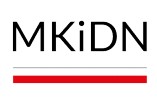Views 2021
15.10 – 15.12.2021 Views 2021
Online
artists: Archive of Public Protests, Krzysztof Maniak, Jana Shostak, Mikołaj Sobczak, Weronika Wysocka
nominating committee: Michał Grzegorzek, Magdalena Komornicka, Marta Kudelska, Piotr Lisowski, Ada Piekarska, Michalina Sablik, Gabriela Warzycka-Tutak
curator: Magdalena Komornicka
collaboration: Joanna Andruszko, Julia Leopold, Marta Miś, Aleksandra Zientecka
visual identification: Karolina Pietrzyk, Tobias Wenig
photos: Maciej Landsberg
video: Marcelina Gorczyńska
The Views competition, which for nearly two decades has presented the most significant phenomena in Polish art at a given time, this year be held not only for the last time, but also in a changed formula. It seems that due to the selection of this year’s finalists, it is an exceptional edition — not only in artistic terms.
‘Why did a film by a young director so steeped in Polish reality and history, unknown in the world, attract the interest of the Venice festival bosses?’ reviews of the film Leave No Traces asked. Why was it now that Abdulrazak Gurnah has been awarded the Nobel Prize for Literature, ‘for his uncompromising and compassionate penetration of the effects of colonialism and the fate of the refugee in the gap between cultures and continents’? Is the Palme d’Or for Julia Ducournau’s film and the Best Director Oscar for Chloé Zhao a coincidence? Why did the jury of this year’s Youth and Film festival in Koszalin decide to award the acting prize to gender (sic!), and why did Bartosz Bielenia, who played the lead role in Jan Komasa’s film Corpus Christi, nominated for the Lux European Parliament prize, shout in its forum? Film or literature awards are accompanied by heated debates and annually repeated accusations of their politicisation, and this applies to a lesser extent to the awards for achievements in the so-called visual arts. And yet, competitions or festival selections are not only about choosing the ‘best’, but also about drawing attention to what is important, current, socially and politically discussed.
For 18 years, each edition of the Views competition has provoked criticism and speculation about who should (or should not) have been among the nominees and who should win. This year’s Views is not only a presentation of exceptional artistic personalities or an attempt to grasp trends and phenomena, because in the artistic practices of ALL of this year’s finalists, we see above all a vivid response to contemporary times affected by crises. To choose among them is like deciding whether the climate crisis, a free Belarus, exclusions, emotional disturbances or human rights are the most important. Since the first edition of the competition in 2003, the intention of the organisers has been — besides honouring artists — to show the broad and diverse context of young Polish art. Today it is identical to the socio-political context.
This year’s finalists include an 18-person collective of men and women photographers who form the Archive of Public Protests — a platform for the distribution of images relating to socio-political tensions in post-2015 Poland. The A-P-P collects visual traces of social activism, grassroots initiatives to oppose political decisions, violations of democratic principles and human rights. It is a warning against rising populism, widespread discrimination and the climate crisis.
Nature and other species are the field of Krzysztof Maniak, whose work is based on activities in the landscape. His works are usually discreet, simple gestures and interactions with the nature of his hometown of Tuchów. Until now, the artist has been appreciated for his attention to locality and the countryside. Today, a different attitude towards time and the materiality of art, calmness and attentiveness are particularly resonant in his works.
Jana Shostak is the author of the idea that instead of the stigmatising term ‘refugee’, the noun nowak/nowaczka [newcomer, masculine and feminine forms] should be introduced into the public space. For more than a year, she has been co-creating the Minute-Long Scream for Belarus time monument, every day at 6 p.m. In her latest work, a performance of Krzykucha. Stand Up (For Your Rights) Comedy, she proclaims that without laughter, there is no revolution!
Mikołaj Sobczak addresses the subject of exclusions, omissions and silences in relation to socially marginalised groups. The artist, who combines painting, performance and video in his practice, addresses the issue of contemporary historical politics. In his contemporary history paintings, he depicts the outstanding protagonists of the LGBTQ movement, queer and emancipatory countercultural milieus and resistance movements alongside imaginary figures and beings from a transgressive utopia.
Weronika Wysocka studies, among other things, contemporary emotions processed and directed by social media and new emotionality emerging in relation to developing technology. ‘Processing the same content in social media somehow caused a synchronicity in feeling the same strong emotions that pushed people to act and take to the streets. The 2020 protests in India, Belarus, the United States and Poland would not have reached such a scale without the viral and emotional power of social media. We are synchronised by algorithms’, says the artist.
However, it is not because of the commitment of the nominated artists or the issues they raise that we have decided not to award the main prize this year and not to produce a competition exhibition. ‘We demand the right to thrive in conditions that are caring and supportive’, the Black Obsidian Sound System collective, nominated for the 2021 Turner Prize, wrote in a statement. Ongoing crises have highlighted the need for change and the demand for new tools. In the arts, this can mean abandoning competition and supporting specific artistic practices. That is why this year’s edition of Views take the form of a public programme prepared together with artists. We will invite the public to participate in tours, workshops and performative activities. The work of the nominees will be made available in the form of interviews, reports and videos. This year, all finalists will receive PLN 10,000 each and their selected works will be submitted for purchase to the collection of Zachęta — National Gallery of Art.
This last edition will also be an opportunity to look back at the history of the competition and recall the more than 50 finalists. Looking back, we can see that Views is not only the history of contemporary Polish art, but also the history of Zachęta itself, the consolidation of the Polish art scene, the art market, as well as social and moral changes.
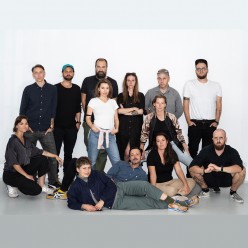
Michał Adamski, Marta Bogdańska, Karolina Gembara, Łukasz Głowala, Marcin Kruk, Agata Kubis, Michalina Kuczyńska, Adam Lach, Alicja Lesiak, Rafał Milach, Joanna Musiał, Chris Niedenthal, Wojtek Radwański, Bartek Sadowski, Karolina Sobel, Paweł Starzec, Grzegorz Wełnicki, Dawid Zieliński
The Archive of Public Protests is a platform for the distribution of images related to socio-political tensions in Poland after 2015. It collects visual traces of social activism, grassroots initiatives opposing political decisions, violations of democratic principles and human rights, i.e. images that can serve as a warning against rising populism and discrimination in the broadest sense: xenophobia, homophobia, misogyny, as well as the climate crisis. The creators of the Archive wish to extend the life of images related to specific events, whose existence usually ends with their publication in the press.
The Archive’s activities are driven by a ‘duty to archive’ and the need to study the visual aspects of protests. The initiators believe that the memory of these events is important from the point of view of concern for the future and plays an important role in trying to draw a picture of the current social and political situation. The Archive is also a gesture of solidarity with people who, on a daily basis, oppose violations of the law, discrimination and violence. ‘We are not a news agency or an objective press entity — primarily because objectivity on narrative grounds is a myth used in the current discussion rather as a measure of conformity to a particular order. A photograph is evidence of phenomena, a witness or a description, but the choices behind its making and publication are subjective. Our work and subsequent activities are the result of our commitment’, declare the members of A-P-P.
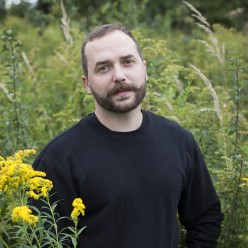
The artistic practice of Krzysztof Maniak (born 1990) is based on activities in the landscape. His works are usually discreet, simple gestures and interactions with nature, such as stroking moss, bark, snow, climbing trees, searching for a distance between two trees corresponding to the length of his body. The artist creates while wandering through forests, meadows and hills in Tuchów, where he lives. These places are both the background for his actions and the material for his temporary installations and the source of props used in his performances.
He is a graduate of the Faculty of Intermedia at the Academy of Fine Arts in Krakow; since defending his doctorate in 2018, he has been associated with the Chair of Phenomena of Intermedia Art at the Academy. He is a laureate of, among others, the 14th edition of the Hestia Artistic Travel competition and the Grand Prix of the 5th Spring Salon organised by the BWA in Tarnów. His works could be seen, among others, in the Museum of Modern Art in Warsaw, SALT Ulus gallery in Ankara, BWA Katowice, BWA Tarnów, Galerii Bielskiej BWA, Biała Gallery in Lublin, MOCAK Museum of Contemporary Art in Krakow, and within the framework of the Post-Artistic Congress in Sokołowsko.
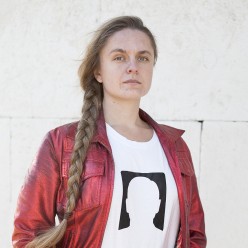
(born 1993) has consciously used mass media as a tool for artistic and activist work since 2016. Instead of the stigmatising term ‘refugee’, she proposed the introduction of the noun nowak/nowaczka [newcomer, masculine and feminine forms] into the public space. In order to tell a wider audience about the newcomers, she started taking part in beauty pageants, which resulted in the film Miss Polonii, co-directed with Jakub Jasiukiewicz (while working on it, she won the title of runner up in the Miss West Pomeranian Voivodeship pageant). She took part in the 2020 protests in Belarus and co-founded the Minute-Long Scream for Belarus time monument (she screams every day at 6 p.m., ‘until the end of the revolution and one day more’). When media interest was aroused by her cleavage, she treated it as a banner with slogans against the Lukashenko regime. She represents the citizens’ initiative Partyzanka. She is a doctoral student at the University of Arts in Poznań. She uses feminatives.
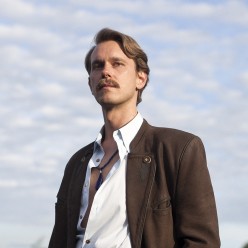
(born 1989) examines how politics, especially historical politics, affects the fate of marginalised social groups and constructs various areas of exclusion. His practice combines painting, video and performance art.
In his performative works, frequently in collaboration with Nicholas Grafia, Sobczak employs avant-garde concepts of post-war Polish theatre to reflect on queerness in a time of political radicalisation. His paintings are saturated with theatricality, references to 19th century paintings and popular culture motifs. The artist wants to create contemporary history painting, depicting the outstanding protagonists of the LGBTQ movement, queer and emancipatory countercultural milieus and resistance movements alongside imaginary figures and beings from a transgressive utopia.
He is a graduate of the Academy of Fine Arts in Warsaw (diploma in the Studio of Spatial Activities) and the Kunstakademie in Münster. He is resident at the Rijksakademie van beeldende kunsten in Amsterdam.
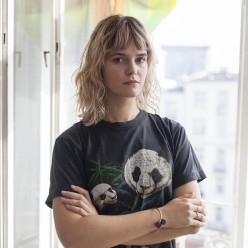
(born 1994) addresses the progress of technology and its impact on humanity and nature in her artistic practice. Her visual essays attempt to capture the new emotionality emerging at the point of contact between the real world and the interface. Wysocka combines video, installations, performance, language actions, and introduces new forms of expression — such as the User X project, which was conceived and presented as an Instagram account.
Initiator of the Turnus Słupsk artistic residency for young artists; founder and curator of the end-less programme. Graduate of the Academy of Fine Arts in Warsaw (diploma in the Studio of Spatial Activities), she studied at the Universität der Künste in Berlin and the Bezalel Academy of Arts and Design in Jerusalem. Her work has been shown at Zachęta — National Gallery of Art in Warsaw, Museum of Modern Art in Warsaw, TOP Photography Museum Tokyo, and Backehause Art Complex Miami, among others.

